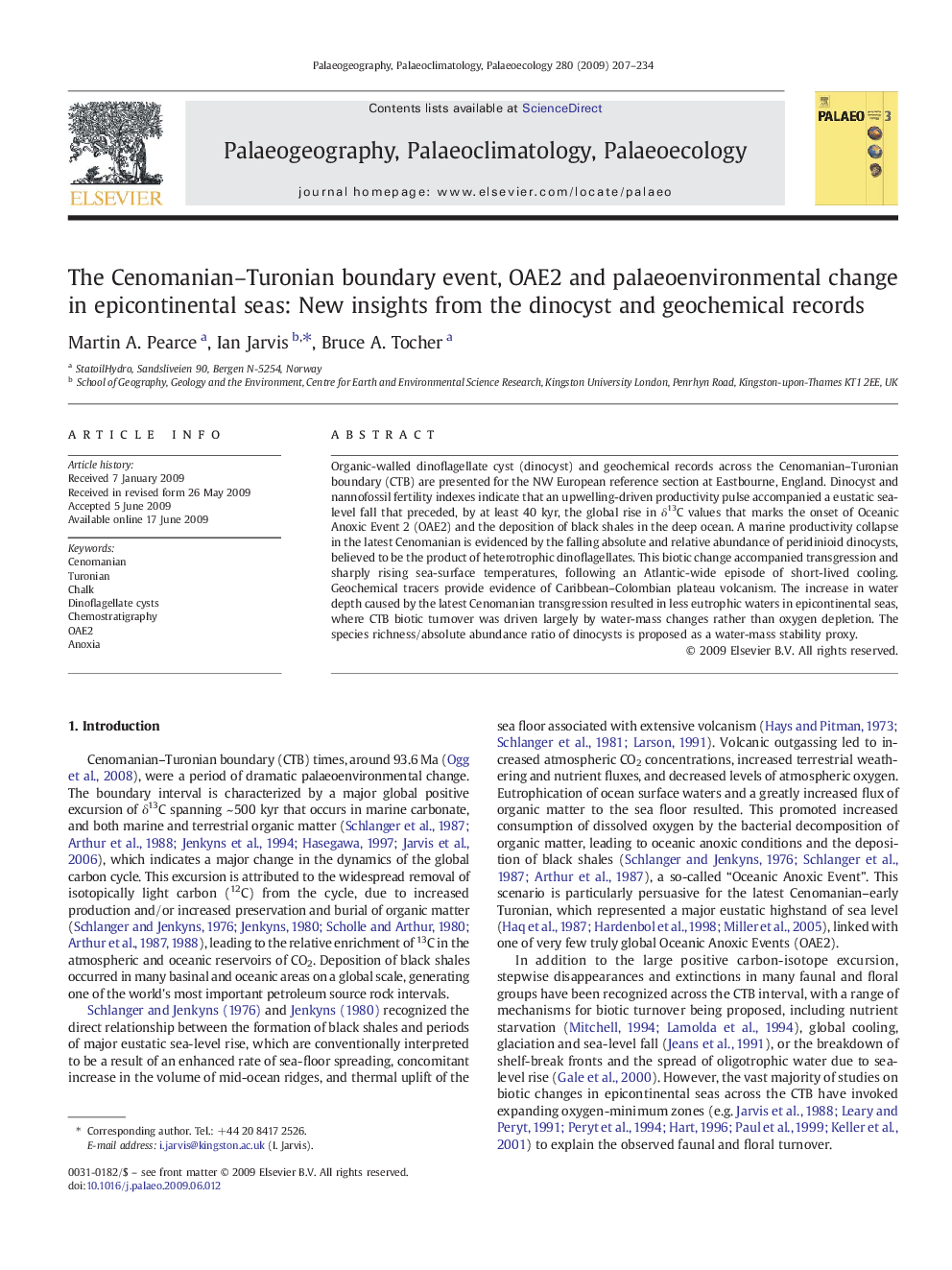| Article ID | Journal | Published Year | Pages | File Type |
|---|---|---|---|---|
| 4468046 | Palaeogeography, Palaeoclimatology, Palaeoecology | 2009 | 28 Pages |
Organic-walled dinoflagellate cyst (dinocyst) and geochemical records across the Cenomanian–Turonian boundary (CTB) are presented for the NW European reference section at Eastbourne, England. Dinocyst and nannofossil fertility indexes indicate that an upwelling-driven productivity pulse accompanied a eustatic sea-level fall that preceded, by at least 40 kyr, the global rise in δ13C values that marks the onset of Oceanic Anoxic Event 2 (OAE2) and the deposition of black shales in the deep ocean. A marine productivity collapse in the latest Cenomanian is evidenced by the falling absolute and relative abundance of peridinioid dinocysts, believed to be the product of heterotrophic dinoflagellates. This biotic change accompanied transgression and sharply rising sea-surface temperatures, following an Atlantic-wide episode of short-lived cooling. Geochemical tracers provide evidence of Caribbean–Colombian plateau volcanism. The increase in water depth caused by the latest Cenomanian transgression resulted in less eutrophic waters in epicontinental seas, where CTB biotic turnover was driven largely by water-mass changes rather than oxygen depletion. The species richness/absolute abundance ratio of dinocysts is proposed as a water-mass stability proxy.
